Tahawus Steam Train Ore Cars
1913-1914
The biggest problem faced by the iron ore mine at Tahawus was transportation. In 1913, in order to prove the quality of their product, it was necessary to bring a certain quantity out for testing at the Northern Iron Company at Port Henry.
Four Phoenix log hauling locomotives of 18 tons each and 52 sleds were used. They travelled at six to seven miles per hour and hauled about 70 tons. Ore concentrates and crude ore were hauled to North Creek during the winter of 1913 - 1914.
Enough ore was able to be brought out and the tests proved satisfactory. This is the only time this transportation method was used.(This information came from The Story of Adirondac by Arthur Masten.)
Locomotive & sleds crossing the Hudson River at North Creek
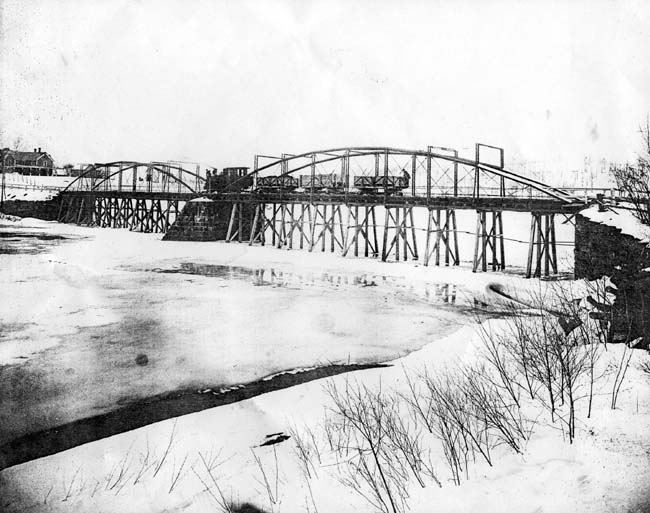
Town of Johnsburg
Locomotive Wreck
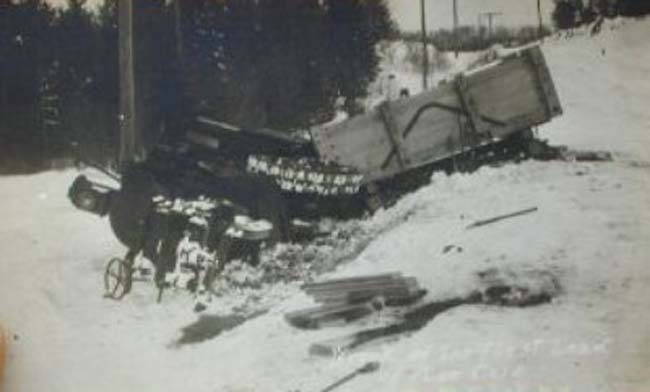
Patton Collection
This photo is of the first load of ore being unloaded at North Creek.

Patton Collection
In the above photo, the bin just to the right of the crane was made for holding the ore. In a Delaware & Hudson blueprint from July 13, 1913, the bin is shown as measuring 20' x 73'. They had proposed to build a separate river crossing over the Hudson using steel beams but instead ended up reinforcing the existing bridge as shown in the top photo.
Another interesting story is that heavy snow that winter combined with a fast break up caused a flood on the Hudson River. A telephone call came in from North River, a small hamlet a few miles north of North Creek, that a thirty foot ice front was moving down the river.
The townspeople got out with axes and cross-cut saws to remove the large 12 inch square timbers that had been placed under the bridge, shown in the photo at top, at North Creek to support the ore trains. They got them out just in time as the ice was only a quarter mile away.
There were two 1 inch cables going across the river that helped slow the ice down. They were attached to the top of the crane shown in the photo above. Once the full force of the ice hit the cables, they snapped with such a loud sound that it was heard miles away.
The bridge was hit by some ice but it held, thanks to the fast work by the locals.
The locomotives were called a Phoenix Engine and could be equipped with wheels or runners. They were used on farms in the summer and in the woods in the winter.
(The above story is from a letter written by Leon Bradley to the Conservationist in response to a photo they ran in December 1956. He was a pilot of one of the engines and said they had a crew of three men. Thanks to Sue Rawson for finding this at the Johnsburg Historical Society.) From the looks of this engine, the three man crew was the steering man up front, the man in the cab and the brake man on the back. In the photo below from the December 1956 / January 1957 Conservationist, the engineer in the cab is Duke Austin of Long Lake, the pilot on the front is Leon Bradley of Newcomb and the man on the side is Howard Bush of Newcomb.
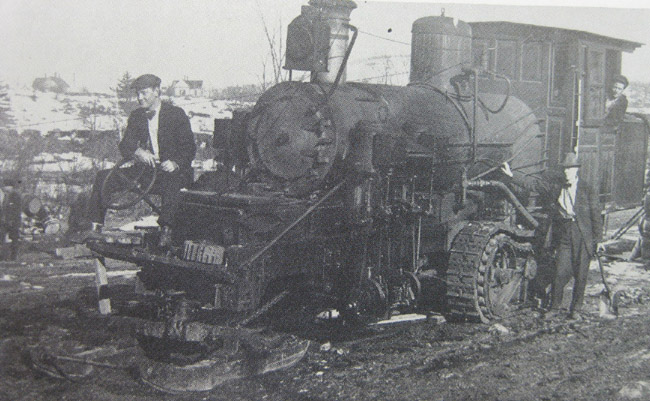
Below are some photos of one of the few remaining Phoenix engines at a park. A man had to sit on the front of this to do the steering. A miserable job coming down the mountain in the winter from Tahawus to North Creek! For an interesting video of one of these in action, go to YouTube on the internet.
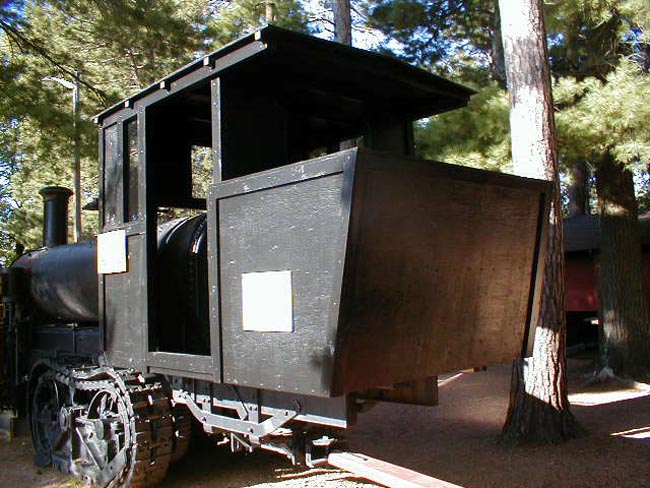

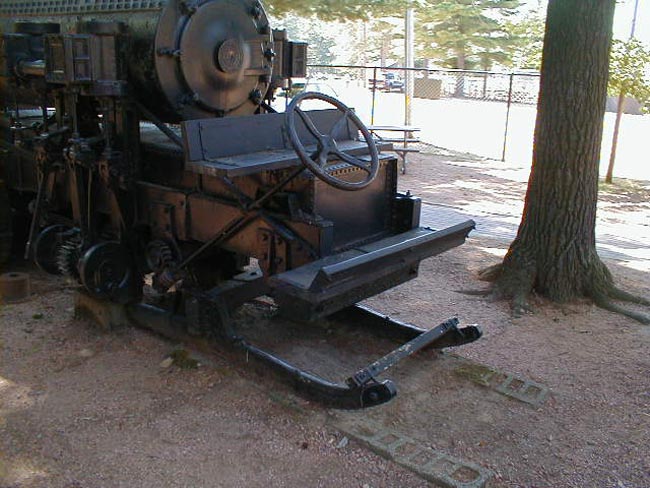


|

